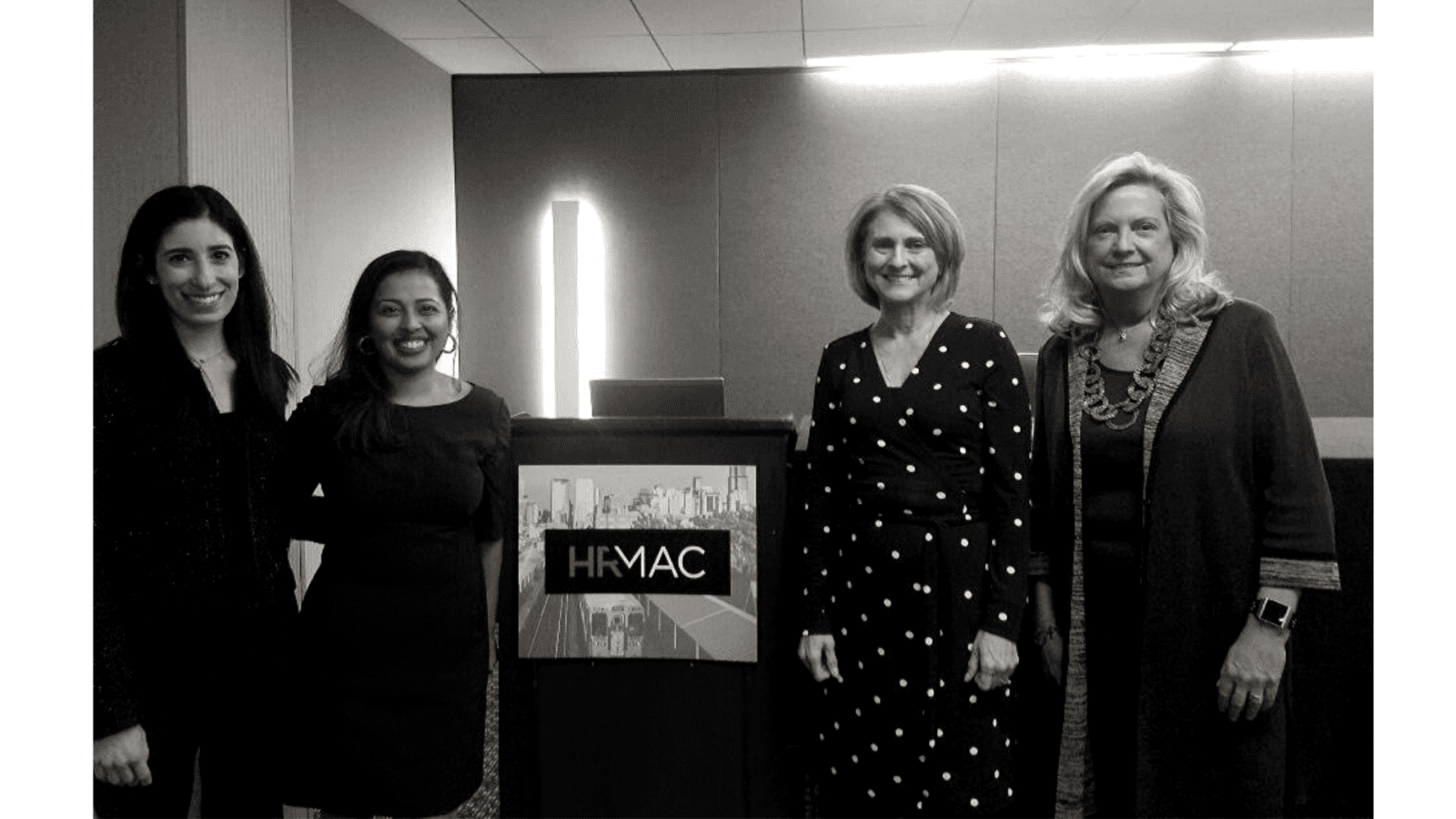
The 3 M’s of Workplace Change
A recap of the SUMMIT 2019 breakout session.
December 12, 2019
Strategy

Over 500 Chicago-based HR professionals gathered on November 19 at SUMMIT 2019 for a packed day of education, networking and, of course, plenty of coffee! Throughout the daylong event, attendees chose from a wide variety of breakout sessions on new and emerging trends in HR, including “The Three M’s To Consider When Making a Workplace Change.” The session was comprised of expert panelists who specialize in workplace change and real estate strategy and included Karon Woodcock, director of change management at Cushman & Wakefield, Erica Ruder, director of strategic consulting at Cushman & Wakefield, Yvonne Franzese, CHRO at CNO Financial Group, Inc., and Palak Langenderfer, senior director of corporate real estate at AON.

The “3 M’s” panelists from left: Erica Ruder, director of strategic consulting at Cushman & Wakefield, Palak Langenderfer, senior director of corporate real estate at AON, Karon Woodcock, director of change management at Cushman & Wakefield, Yvonne Franzese, CHRO at CNO Financial Group, Inc.
Though the partnership of real estate and HR is not an obvious one, these leaders addressed powerful trends that were discovered through Cushman & Wakefield’s client-utilization studies: 58% of current office space in the U.S. is being underutilized, and 81% of companies have no real-estate strategy. In a period where the war for talent is at an all-time high, creating an office space that is not only cost-effective, but also attracts and retains next-generation leaders, is imperative. As Cushman & Wakefield advised, “Your organization’s real estate, both the locations you operate in and the workplace environment, directly impact your ability to win the war for talent. It’s critical that HR leaders are integrated throughout your company’s real estate and workplace initiatives to ensure alignment between real estate and talent strategies.”
Millennial turnover alone is costing the U.S. economy an estimated $30.5 billion annually, and not having a flexible work plan, up-to-date technology, competitive benefits or a workspace that feels positive, collaborative and energized, are all significant factors that affect employee retention.
The “Three M’s” panelists broke down how they help companies grow and change physical spaces to stay competitive, and how HR Leaders can guide current employees through the tricky process of organizational change. Here, we share their “Three M’s” and how you can lead your company into becoming a more modern workspace.
As you think about your company, what organizational change is needed in order for you to “make it” in today’s ever-evolving and tightening labor market? Perhaps relocating to a more geographically desirable space will work, or switching to an open-office floorplan. Whatever the case may be, Karon shared that no matter how positive the change might ultimately be for the company, employees will experience the “valley of despair” when being faced with a change that will impact their daily work life and routine, such as a longer commute or loss of personal space. To help employees see the overall goal and benefit of a change, panelists offered the following ideas, based on the PROSCI® change methodology, to consider:
As HR leaders guide companies that are “continuously evolving to remain competitive,” it is important to remember that a large workplace change is more than just a simple communication. If the change is not re-enforced through multiple channels, it can lead to “a resistance to change, [and] the project could be delayed or even cancelled.” The panelists added that, during the change process, having a “change-management program can guide employees and leaders to embrace the change needed to keep their company competitive.” Here are some ways you can not only clarify any change questions, but get employees excited about what the future change has to offer:
Without a tangible measurement, there is no way to confidently move forward or make improvements. As the Cushman & Wakefield team shared, “How do you know if your change-management plan was successful without measuring the results? Before the project starts, determine the leader expectations for success and then find a way to measure it for results.”
No matter what the change is, there are always ways to get employee engagement and feedback to measure the change’s progress, such as surveys, interviews, or time to productivity. Here are a few tips to think about at the beginning of the process to ensure the change has a data-driven approach:
Though companies are making large amounts of organizational change to attract and retain top-talent, it’s incredibly important as an HR leader to remember that any change, no matter how small, has an emotional impact on dedicated employees. HR and Real Estate can not only work together to evaluate the significant benefits of a stronger real estate strategy, but create an effective change adoption plan that will convert each hesitant employee into a change champion.